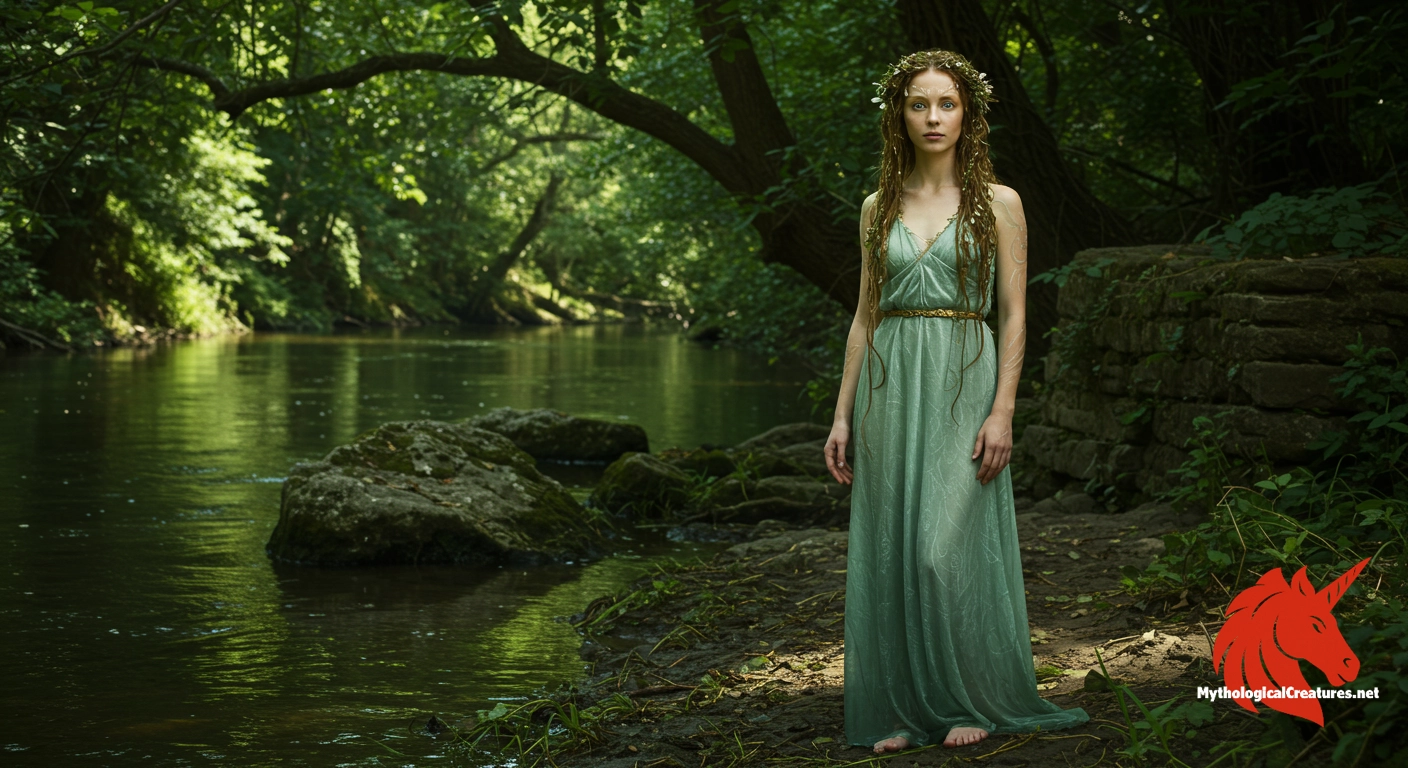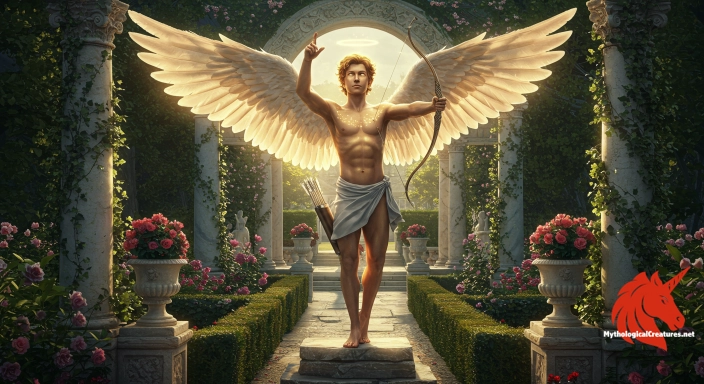Eunoë: Eunoë is a naiad-nymph from Greek mythology, daughter of the river god Sangarius, and sometimes considered the daughter of Persephone.

Eunoë
Eunoë - Eunoë is significant as a link between the divine natural elements and mortal royal lineages in Greek myth.
Origins & First Encounters
Eunoë emerges as a captivating naiad-nymph within the vast tapestry of Greek mythology, her essence intertwined with the life-sustaining flow of rivers and divine lineage. Born of the mighty river god Sangarius, she embodies the nurturing spirit of water and the ever-changing rhythms of nature. Her myth is further enriched by occasional associations with Persephone, weaving together themes of seasonal renewal and transformation. By linking her to the realms of both fertility and regeneration, ancient traditions hint at a subtle duality in her character. As the wife of the Phrygian king Dymas, she assumes a regal mantle, merging the earthly with the divine. Through her union, her legacy is perpetuated in the lineage of Hecuba, anchoring her to the legendary narratives of Troy. Her story, though brief in many classical accounts, resonates with the complexities of familial bonds and the interactions between gods, mortals, and the natural world. The delicate interplay between her divine ancestry and royal associations offers a multifaceted view that continues to intrigue scholars and enthusiasts alike. In many respects, her myth serves as a microcosm of the broader ancient Greek understanding of nature, power, and transformation. The enduring echoes of her narrative remind us of the intricate connections that define mythological heritage.
Her presence in these ancient accounts invites a reflection on how even lesser-known deities contributed to the rich, interwoven lore of classical civilisation, revealing layers of meaning that extend beyond the immediate scope of myth.
Source Texts & Tale Variants
The accounts of Eunoë have been preserved in a patchwork of ancient texts, where brief genealogical references and scholia provide glimpses into her storied past. Fragments from classical sources depict her primarily through her familial connections, offering a window into the mythic traditions of both Greek and Anatolian cultures. Some early commentaries note her divine parentage, emphasising her role as a daughter of the river god Sangarius with tenuous associations to Persephone. Over time, differing narrations have led to variations in her story, with certain texts referencing her under alternate names such as Euagora. These divergent traditions underscore the fluidity of ancient myth-making and the transmission of narratives across local communities. Localised folklore, particularly from the Phrygian region, enriches her myth by integrating cultural symbols and rituals tied to river worship. Later compilations and reinterpretations during the Hellenistic and Byzantine periods further nuanced her character through poetic embellishments and variant genealogies. Each mention, although brief, contributes to a layered persona, reflecting a broader tradition of intergenerational mythic storytelling. The scattered nature of the surviving sources challenges modern scholars to piece together a coherent narrative from these diverse elements. Ultimately, the fragmented records of Eunoë’s myth highlight the evolving nature of oral and written lore in the ancient world.
This multiplicity of sources not only celebrates her enigmatic identity but also underscores the enduring appeal of minor deities in classical tradition.
Form & Powers
Iconography and literary hints suggest that Eunoë was envisioned as possessing an ethereal beauty that surpassed mortal grace yet subtly resonated with the natural elements. Descriptions of her physical form often evoke the shimmer of a flowing river, with skin that seems to capture the soft luminescence of moonlit waters. Her features, delicately chiseled in the collective imagination, reflect both strength and a refined elegance typical of divine nymphs. Flowing tresses, as fluid and dynamic as the currents of her riverine origin, frame a visage imbued with enigmatic allure. Her eyes are portrayed as reflective and deep, reminiscent of hidden pools that mirror the mysteries of nature. Artistic renditions sometimes depict her adorned with garlands of waterlilies and subtle hints of aquatic embellishments, reinforcing her connection to the element of water. The portrayal of Eunoë occasionally incorporates motifs of rippling water and shimmering reflections, serving as a visual metaphor for her dual passage between the realms of nature and divinity. A distinguishable aura appears to envelop her, suggesting an inherent interplay between vulnerability and an unyielding strength. Variations in her depiction, whether in sculpture or painting, tend to highlight different aspects of her character—from her nurturing essence to her enigmatic beauty. Such representations, though sparse, invite viewers to perceive her as both a personification of nature’s grace and a symbol of enduring mythic heritage.
Even in the absence of a detailed narrative, the physical imagery of Eunoë continues to inspire interpretations that celebrate the transient beauty of water and the timeless allure of mythological femininity.
Regional Faces
Eunoë’s myth has been shaped by regional influences that reflect the intermingling of Greek and Anatolian traditions, offering distinct local flavours to her narrative. In areas surrounding the river Sangarius and neighboring territories, she was revered not only as a divine water spirit but also as a guardian of the land's fertility. Local Phrygian lore especially emphasises her role as a consort to King Dymas, thereby colouring her image with reverence for both nature and royal heritage. Cultural adaptations in these regions often intertwined her identity with broader agricultural and seasonal themes, projecting her as a benefactor of bountiful harvests. The subtle blend of indigenous ritual practices with Hellenic myth helped shape her role in regional ceremonies dedicated to water and renewal. Variations can also be discerned in the artistic style and ceremonial depictions, where local iconography—such as motifs of river currents and native flora—augments her mystique. In some traditions, her character is merged with other local water deities, resulting in a multifaceted persona that embodies a spectrum of divine attributes. Oral traditions from small communities provide an additional layer of narrative depth, highlighting her protective and nurturing aspects. These regional adaptations reveal how Eunoë’s myth was not static but evolved to meet the cultural needs and environmental realities of diverse communities. The local reinterpretations of her figure serve as a testament to the adaptability of myth in addressing regional identities and spiritual practices.
Such variations underscore the dynamic interplay between local customs and the broader mythological canon, illustrating Eunoë’s enduring presence across geographical and cultural boundaries.
Cultural Parallels
Comparisons between Eunoë and similar mythological figures reveal striking similarities that traverse regional and cultural divides. Like many water deities across Mediterranean mythologies, she embodies the nurturing and transformative qualities attributed to the life-giving properties of water. Figures in Roman lore, such as the Naiads, share a kinship with Eunoë, both in physical depiction and in the symbolic roles they assume in fertility and domestic narratives. In Celtic traditions, analogous water spirits evoke themes of rebirth and the inexorable flow of nature, mirroring Eunoë’s ethereal essence. Her integration into the lineage of Trojan royalty draws parallels with deities that bridge the gap between the natural and mortal realms. The interplay between her divine attributes and royal associations finds resonance in Near Eastern mythologies, where waters are often personified as both sources of creation and symbols of renewal. Cross-cultural examinations highlight that her multifaceted character is a recurring motif—a divine mediator between the forces of nature and human civilisation. The synthesis of different mythic elements in her story invites comparisons with other minor deities who, despite limited narratives, wield significant symbolic impact. Such analyses underscore the universality of certain mythological themes, particularly the reverence for water as an essential life force. In this way, Eunoë’s myth stands in harmonious dialogue with a range of global traditions that celebrate nature’s enduring power.
These cultural parallels not only enrich our appreciation of her narrative but also affirm the timeless allure of water as an emblem of life and continuity throughout human history.
Legacy & Modern Evolution
Over the centuries, Eunoë’s myth has evolved from an obscure lineage detail to a symbol of the subtle interplay between nature and divine providence. In classical antiquity, her identity was principally defined by her origins as a river nymph and her intimate connection with the royal narratives of Troy. With the passage of time, her image gradually absorbed additional layers of meaning, transcending her initial mythic function to embody broader themes of transformation and continuity. The Renaissance, with its revived interest in classical antiquity, saw artists and poets subtly referencing her as part of a larger tableau of nature’s enduring beauty. Modern interpretations have further expanded on her enigmatic presence, often reflecting themes of ecological renewal and the persistence of ancient cultural symbols. Contemporary creative works, from literature to visual arts, occasionally invoke her image as a quiet homage to the timeless grace of water and the enduring spirit of myth. Even though she remains a relatively minor figure in the grand mythological canon, her nuanced legacy continues to inspire discussions about the intersection of nature, divinity, and human emotion. Scholars have re-evaluated her contributions as emblematic of the layered complexity found in mythic genealogies. The subtle evolution of her narrative mirrors broader cultural shifts, where the reinterpretation of classical themes plays a pivotal role in modern artistic expression. In this way, Eunoë’s enduring presence in myth serves as a reminder of the fluidity of interpretation and the perennial human fascination with the divine forces of nature.
Her ongoing legacy, though modest in scope, poignantly reflects the capacity of ancient myths to adapt and flourish within the ever-changing landscape of cultural thought.
Interesting Fact
An intriguing aspect of Eunoë's myth is the dual attribution of her maternal lineage, with some sources identifying her as a daughter of Persephone and others referring to a separate naiad, Euagora, thereby highlighting the rich and varied tapestry of mythological storytelling.
Quick Creature Info
Origin:
Associations:
Our Mythic Legendary Rating:

Also Sometimes Known As:
Habitat:
Supernatural Powers:
Physical Attributes:
Abilities:
Behavior:
Lore:
References
Discover Another Mythical Legend You May Not Have Heard Of?
Uncover the mysteries of ancient folklore and expand your knowledge of legendary beings from cultures around the world.
Dare to Meet the Cupid....
Curated by the Mythological Creatures Team (rev. May 2025)
